Client
WORLD LEADER GROUP IN SMALL HOUSEHOLD APPLIANCES
Missions
ux research, innovation, r&D, UX DESIGN
How can a product help and support people to take care of them in their daily life ?
Mirror
An everyday object to take care of yourself
who is the Group ?
It's a French company created in 1857 by Antoine Lescure. It developed over commercial successes and technical innovations, but it was in the 1930s that it exploded, thanks to his very popular Milk Squeezer. It is now ranked number one worldwide in the field of small household equipment.
THE challenge
The group's innovation pole was thinking about a new product -- an intelligent tool for self care.
The challenges here were to study the concept of self care and to know the mirror’s position in people’s environment on a daily basis.
01.
ORGANISATION & Methodology
Analyses, hypotheses and definition of goals
Context and objectives
The project goal was to understand the mirror’s position and use in people’s daily lives -- to identify obstacles and motivations of a ‘smart mirror’ in use.
Assess consumer appetite for a smart mirror
Know the uses of daily life and understand the concept of “taking care of yourself”
One method, user-centered design
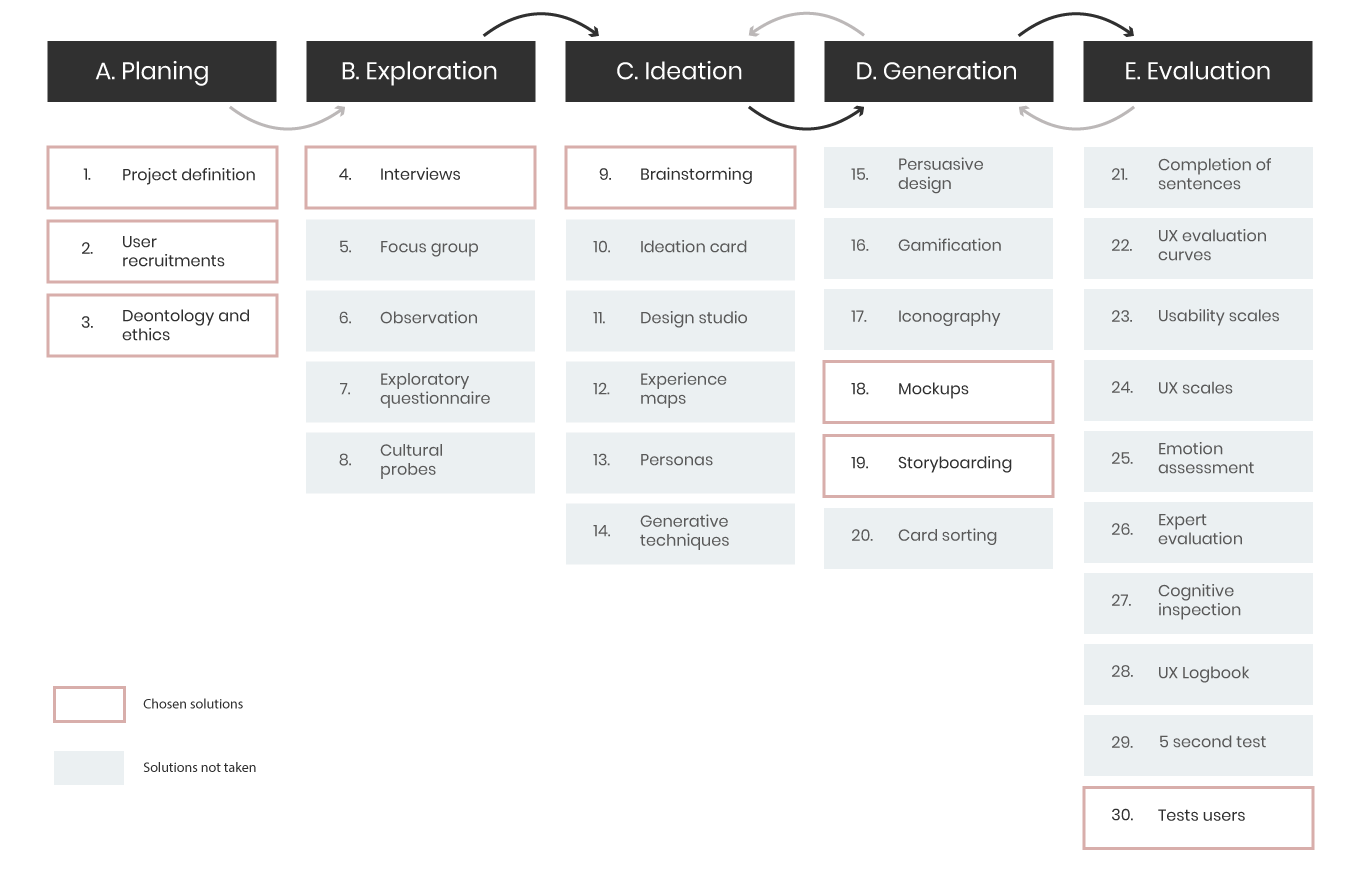
02.
UNDERSTAND & Analyse
Recruitment, interviews and analyses
Semi-structured interviews
The interview questions were aimed to understand who the users are, their needs and how they pamper in daily life.
We have made sure the plan follows certain rules. In particular by respecting a coherent logic in the themes: the relationship to the body, the relationship to the notion of beauty and the relationship to digital. We also wanted the questions to be as neutral as possible to not influence the participants' answers. The questions followed the "funnel" rule -- asking most general questions to the most specific ones.
The interviews took place in people’s houses; 12 different person -- 6 men, 6 women and lasted approximately 1 hour each.
Object of study
Daily use
The concept of "taking care of yourself"
Thematic
Body relation
Relation to the concept of beauty
Relation to digital
Results
The interviews were transcribed from audio to written, then analysed one by one.
Thematic analysis seemed to be a more relevant method for this project. The goal was to bring out the most recurring, the most important to users.
For the rest, we decided to focus on four main themes :
Take care of yourself
For the majority, taking care of yourself is different in different ways. Some will take care of themselves by doing physical activity, others by taking care of their bodies (makeup, hygiene, clothes, hair removal, etc.), or some just by practicing their passions.
Beauty
The notion of beauty is very personal for each of the participants. What stands out mainly can be divided into “two parts” :
- External beauty, that which we see on others, such as clothes, makeup, skin care, etc.
- Inner beauty, which is more related to a person's behaviour or state of mind.
Self-confidence
Self-confidence has been characterized as a way of feeling good in both body and mind, a kind of harmony between the two. The participants found a lot of interest in this notion, it seemed really important and necessary
The mirror
Many statements about the mirror appeared during the interviews, in particular on the use they have of it, what place it has in their daily life, the time allocated, the number per dwelling, etc.
03.
IMPLEMENTATION & Creation
Selection of scenarios, design of the prototype
The scenarios choice
Scenario 1: Hair and aesthetics with male and female variant
General idea: Assistant who would help users to cut their hair for a woman or to cut his beard well for a man.
Scenario 2: Relaxation - recreation
General idea: Assistant who would help the user to relax, to relax with several modes of relaxation by correcting his posture in real time.
Scenario 3: Sport
General idea: Assistant who would help the user to exercise, with several modes by correcting his posture in real time.
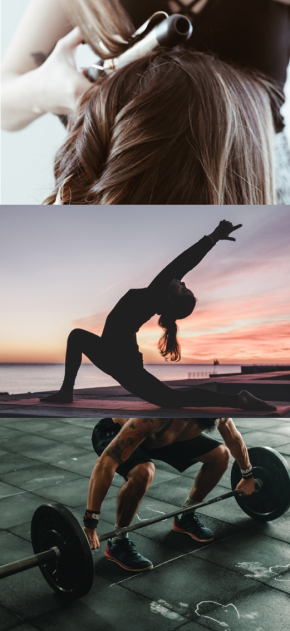
Mockups
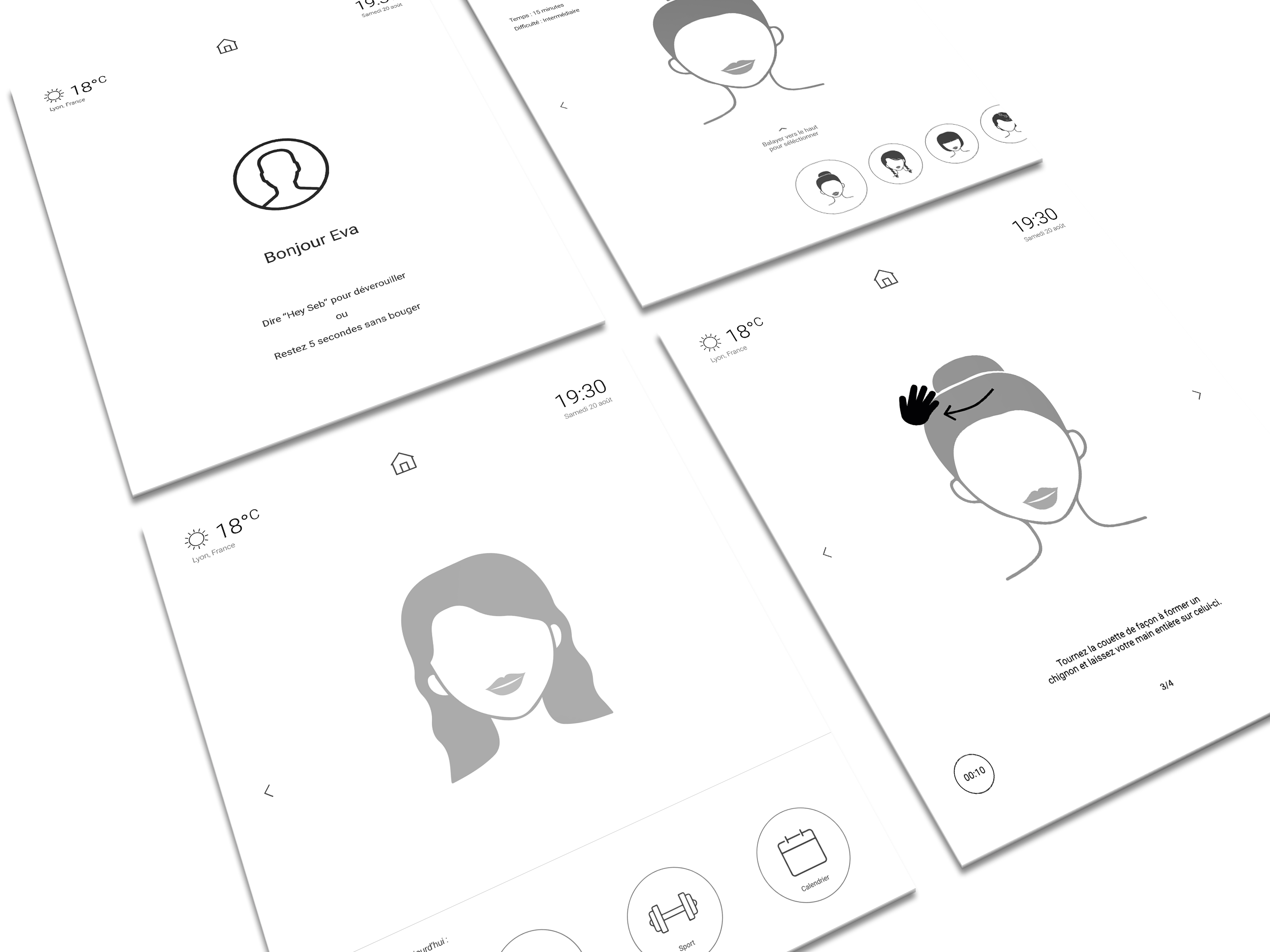
Motion detection
Whenever the person or any other movement is picked up by the mirror, the mirror wakes up and displays information. As a safety measure, you must remain in front of the mirror, in a defined position for a certain time for it to turn on. It is also possible to interact with the device interface through the person's gestures.
Voice interaction
The person using the mirror can interact and talk to them to perform actions. The device can also speak, respond to the person, following interactions.
Tactile interaction
As with the vast majority of digital devices today, it is possible to interact with the mirror using the touchscreen.
Facial recognition
The mirror can recognize its users. Each user can create their profile and configure facial recognition there. This will allow the device to recognize the user and choose the corresponding profile. It is also a security measure that allows only registered users to unlock the device.
Real-time analyses and statistics
The device analyses the user's gestures, suggesting corrections in real time to improve during the sessions. Then, he can consult in detail the results: the objectives achieved, the progress made, the future steps to be accomplished, etc.
Everyday tools
The integration of everyday tools like weather, time, calendar and news is an asset in the daily use of a user.
04.
USER TESTS & Results
Recruitment, interviews, analyses.
The Wizard of Oz
The Wizard of Oz technique seemed ideal for what we wanted to collect as data -- this allowed us to replace the functionality with an external substitute made by ourselves.
We had the participants test on paper interfaces, glued to a mirror. This choice was wanted and assumed. We did not want participants to slow down their expressions or to focus on small graphic details such as the choice of colours, typography or others. We wanted the test person to be able to project themselves, that they are not afraid of being critical.
The goal was to test the usability of the interfaces by observing the users interacting with them.
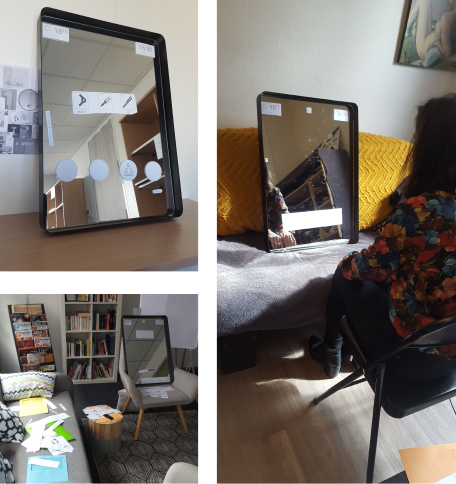
Conclusion
The prototype we created and had evaluated corresponded overall to the idea the participants had of it. The feedbacks we had, were mainly appreciation of the concept of coach and advices brought by the mirror. It is more like a companion which could give advice on daily activities.
The scenarios we tested:
for hairdressing: precise knowledge of the field is expected for more sophisticated and personal advice.
for sport: the coaching mode is very popular, but improvements are needed on the results after a session as well as on the coach's tone of encouragement during the sessions.
for relaxation: generally good feedbacks, it was well appreciated by all users.
Privacy concerns, such as the fact that the mirror has a camera and microphone in rooms that are intimate or shared, may cause some concern among users.
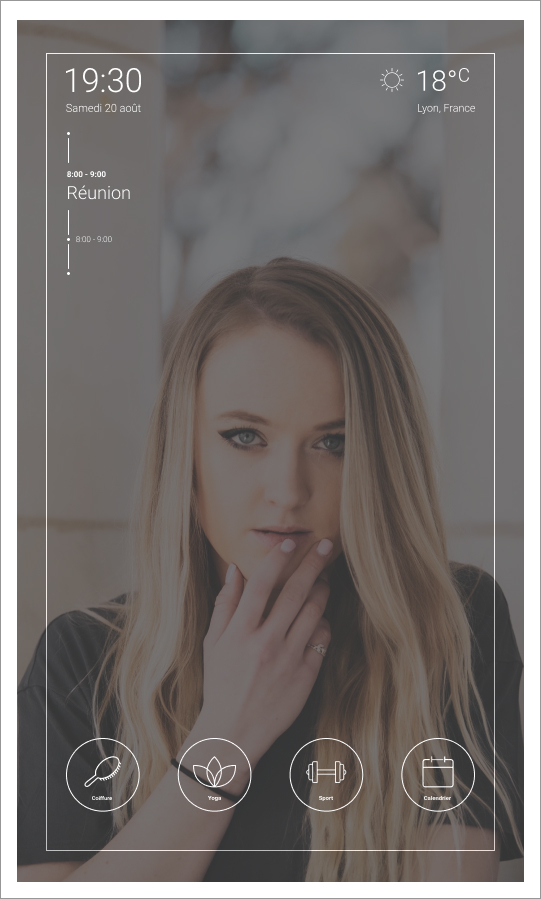
Let's Do This.